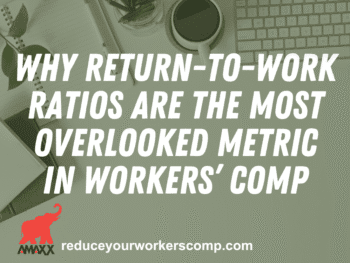
Impact on Employee Well-being
One of the most significant benefits of Return-to-Work programs is their positive impact on employee well-being. When employees are able to return to work quickly and safely, they experience a sense of normalcy and purpose, which is essential for mental health. The routine of work helps mitigate feelings of isolation and depression that can accompany extended periods of absence.
A Harris Poll conducted in February 2021 highlighted several key issues affecting adults during the pandemic, including increased stress, weight gain, reduced physical activity, and sleep problems. The poll revealed that 50% of adults reported increased stress levels, 62% of adults with children at home felt more stressed, and 53% reported being less physically active. Moreover, 67% experienced changes in sleep patterns, either sleeping more or less than they wanted. These findings underscore the need for structured Return-to-Work programs that can help alleviate some of these stressors by reintegrating employees into the workforce, thereby promoting mental and physical health.
Click Link to Access Free PDF Download
“13 Research Studies to Prove Value of Return-to-Work Program & Gain Stakeholder Buy-In”
Financial Benefits for Employers
Return-to-Work programs are not only beneficial for employees; they also offer substantial financial advantages for employers. Effective Return-to-Work programs can significantly reduce the costs associated with workers’ compensation claims. Studies have shown that a small percentage of workers’ compensation claims account for a large portion of the costs. For example, 5% of claims can account for up to 80% of workers’ compensation expenses. By implementing Return-to-Work programs, employers can prevent these high-cost claims, realizing a substantial return on investment.
The Washington State Department of Labor & Industries found that employees not offered accommodation for transitional duty within three weeks were almost twice as likely to develop chronic work disabilities. This highlights the importance of early intervention and providing suitable Return-to-Work options to minimize the duration and cost of claims.
Furthermore, the Occupational Safety and Health Administration (OSHA) has demonstrated that the indirect costs of having workers out of work can be 1.1 to 4.5 times the direct costs. These indirect costs include training replacement workers, lost productivity, and administrative expenses. By reducing the time employees are away from work, Return-to-Work programs can help mitigate these indirect costs, resulting in significant savings for employers.
Studies Supporting Return-to-Work Programs
Numerous studies support the effectiveness of Return-to-Work programs in improving outcomes and reducing costs. For instance, a lengthy study conducted in London found that injured workers who continued working had shorter recovery times and longer life expectancies compared to those who were out of work. The probability of returning to work decreases significantly after the first 12 weeks following an injury, underscoring the need for prompt action.
In another study, the Washington State Department of Labor & Industries tracked compensable claims from 2011-2012 and found that the probability of returning to work within 12 weeks was 92.2%. However, this probability dropped to 55.4% after 13-26 weeks, 32.2% after 52-65 weeks, and only 4.9% after more than 104 weeks. This data clearly indicates that the sooner an injured worker can return to some form of work, the better the long-term outcomes.
Real-World Benefits and ROI
Washington State’s Stay at Work Financial Incentive Program, which offers a 50% reimbursement of payroll expenses for employees who return to work, has demonstrated a $2.40 return for every dollar invested. With 4,000 employers and 16,700 injury claims participating, the program has paid out $41 million in reimbursements and shown that 84% of claims do not extend beyond 66 days.
Similarly, a study by McLaren (2010) found that employers with Return-to-Work programs experienced a 3.6-week reduction in the median number of weeks employees were out of work. This reduction translates into substantial cost savings and improved productivity.
FREE DOWNLOAD: “13 Research Studies to Prove Value of Return-to-Work Program & Gain Stakeholder Buy-In”
Conclusion
The importance of Return-to-Work programs cannot be overstated. They offer significant benefits for both employees and employers, including improved mental and physical health for workers, reduced costs associated with workers’ compensation claims, and enhanced productivity. By implementing effective Return-to-Work programs and leveraging research to gain stakeholder buy-in, organizations can create a supportive environment that facilitates quicker and safer returns to work, ultimately benefiting everyone involved.

Contact: mstack@reduceyourworkerscomp.com.
Workers’ Comp Roundup Blog: http://blog.reduceyourworkerscomp.com/
Injury Management Results (IMR) Software: https://imrsoftware.com/
©2024 Amaxx LLC. All rights reserved under International Copyright Law.
Do not use this information without independent verification. All state laws vary. You should consult with your insurance broker, attorney, or qualified professional.

















